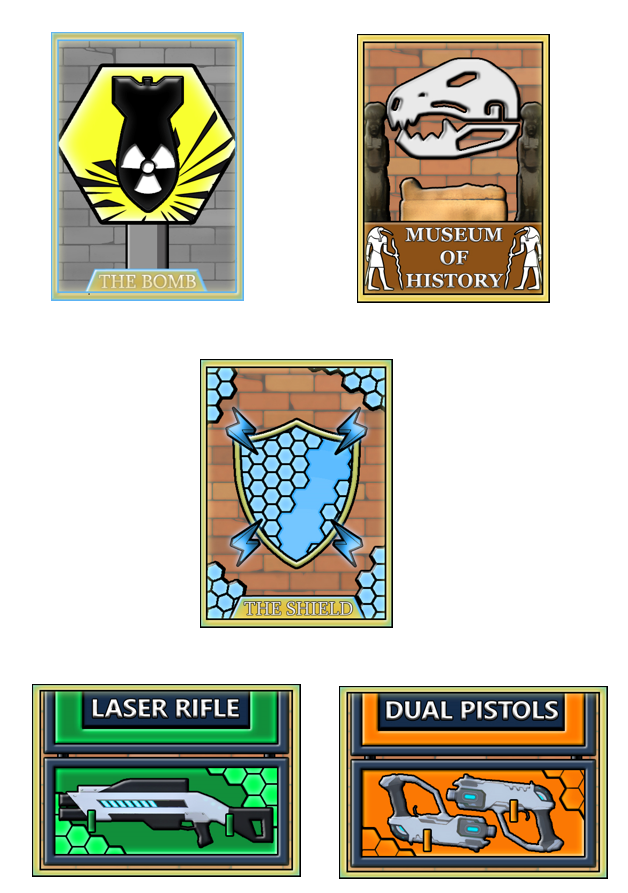Museum Shooter
Engine: Unity 2018.2
My Role: All Programming
Team Size: 2
Download Demo: Click Here
Source Code: Click Here
Description
An Action based, Third Person Shooter utilising AR on Mobile. Museum pieces have started coming to life and they are not friendly. Defend yourself by using different cards (real physical cards) to gain new weapons and activate power-ups. How long will you survive?
Utilising a Unity Augmented Reality API called Vuforia, I created a top down, third person shooter where real cards can effect the gameplay. The API allows tracking custom images using the camera on the Mobile phone and displacing them with in game objects. The game's environments utilise photogrammetry to create the modelling of all the different pieces in the museum. We went to our local museums and took many pictures of the artifacts they had and then used the pictures to reconstruct them in 3D. I took some of those pieces and gave them functionality in Engine for animation and AI in order to act as moving enemies. Since this is a mobile game I had to make sure the mechanics and graphics were optimized requiring clean code and shaders that support baked lighting. Just like most of my other projects, I created custom shaders in this project too for the dissolve and shield effects seen in the trailer.
Feel free to Download the Demo and try out the game on an android phone. You will need to print the cards that come with the download.
Project Technical Aspects
- C# Programming and Monobehaviour Unity API
- All mechanics using C# scripting. Use of Unity's API to create mechanics such as custom character controller, collision management, AR Functionality and Gestures Recognition. Cards are recognized by camera and can detect gestures for pressing virtual buttons, they are also able to show an in-game model above their location where the shader is able to blend in with the real life background the camera is seeing. This can be seen on the shield card.
- Photogrammetry
- Most models in the environment are real life models in museums that we converted to 3D models by using Photogrammetry techniques.I then cleaned the models and further altered them in 3DS Max. For some models I also rigged and animated them for engine use.
- Shaders
- Used Unity's new Material System alongside HLSL programming within Shader Lab to produce the shaders and effects seen. This application has a VR version aswell meaning my shaders were created to be optimized and compatible with both AR and VR



